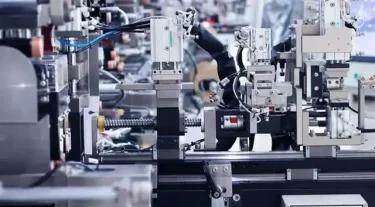
# Tape Production Process and Techniques
## Introduction to Tape Manufacturing
Tape manufacturing is a complex process that involves multiple stages to create adhesive products for various applications. From everyday household uses to industrial applications, tapes serve numerous purposes in our daily lives. The production process combines material science, engineering, and precision manufacturing techniques to create reliable adhesive solutions.
## Raw Materials in Tape Production
The foundation of tape manufacturing begins with selecting high-quality raw materials. The primary components include:
– Backing material (paper, plastic film, cloth, or foil)
– Adhesive compounds (rubber-based, acrylic, or silicone)
– Release liners (for pressure-sensitive tapes)
– Additives (tackifiers, stabilizers, and fillers)
## The Tape Manufacturing Process
### 1. Backing Material Preparation
The process starts with preparing the backing material. For plastic films, this involves extrusion or casting processes to create thin, uniform sheets. Paper and cloth backings undergo special treatments to enhance strength and adhesive compatibility.
### 2. Adhesive Application
There are several methods for applying adhesive to the backing material:
– Solution coating: Adhesive dissolved in solvent is applied and dried
– Hot melt coating: Molten adhesive is applied and cooled
– Water-based coating: Adhesive dispersed in water is applied and dried
### 3. Drying and Curing
After application, the adhesive undergoes drying or curing processes to achieve optimal properties. This stage removes solvents or water and allows the adhesive to develop its full bonding strength.
### 4. Slitting and Rewinding
The large rolls of coated material are precisely slit into narrower widths according to product specifications. Advanced slitting machines ensure clean edges and consistent widths.
### 5. Packaging
Finished tape rolls are packaged with appropriate cores and labels. Specialized packaging protects the adhesive surface and maintains product quality during storage and transportation.
## Advanced Tape Manufacturing Techniques
Modern tape production incorporates several advanced techniques:
### Multi-layer Coating
Some tapes require multiple adhesive layers or special coatings to achieve desired properties. This technique allows for customized performance characteristics.
### UV Curing
Certain adhesives use ultraviolet light curing instead of thermal processes, offering energy efficiency and precise control over curing parameters.
### Micro-patterning
Advanced manufacturing creates microscopic patterns on adhesive surfaces to optimize performance for specific applications.
## Quality Control in Tape Production
Stringent quality control measures ensure consistent tape performance:
– Adhesion strength testing
– Coating weight verification
– Tensile strength measurements
– Temperature resistance evaluations
– Aging and durability testing
## Environmental Considerations
Modern tape manufacturers focus on sustainable practices:
– Reducing solvent use in adhesives
– Developing biodegradable backing materials
– Implementing energy-efficient production processes
– Recycling production waste
## Future Trends in Tape Manufacturing
The industry continues to evolve with:
– Smart adhesives with responsive properties
– Nanotechnology-enhanced tapes
– Bio-based adhesive formulations
– Automated production with AI quality control
From simple packaging tapes to high-performance industrial solutions, tape manufacturing remains a vital industry that combines traditional techniques with cutting-edge innovation to meet diverse market needs.
Keyword: tape manufacturing
